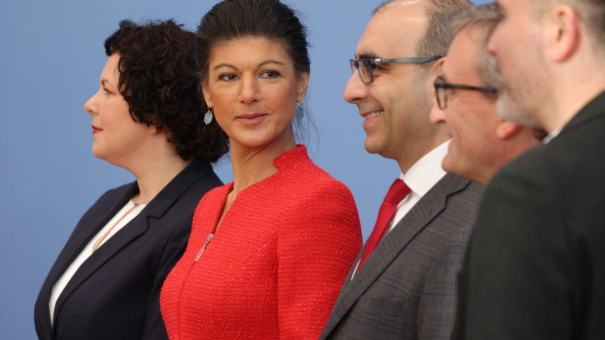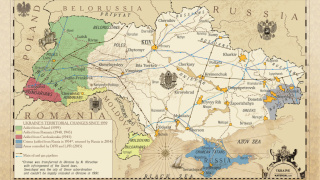Shifts in the German political landscape
After the failure of the Weimar Republic’s fragmented political system, the Federal Republic of Germany that emerged took great pride in its stability. During its golden years in the 1960s and 1970s, the political arena was dominated by three parties: the Social Democratic Party (SPD) and the Christian Democratic Union (CDU) along with its Bavarian counterpart, the Christian Social Union (CSU). These catch-all parties were complemented by the smaller liberal Free Democratic Party (FDP), which often formed coalitions with either side.
The 1980s marked a shift with the emergence of the Greens on the left. They initially faced strong opposition, especially from the CDU and CSU. A similar trajectory followed for the Party of Democratic Socialism, the post-reunification successor of East Germany’s Socialist State Party. Initially a regional entity in Germany’s east, it rebranded in 2005 as Die Linke (The Left), positioning itself as a left-wing critic of former Chancellor Gerhard Schroeder’s SPD and their centrist social reforms. However, internal conflicts between modern progressive and traditional socioeconomic left-wing factions within Die Linke led to a split in 2023, catalyzed by the departure of iconic figure Sahra Wagenknecht, who announced the formation of a new party (the Sahra Wagenknecht Alliance, or BSW).
The emergence of the Alternative fur Deutschland (AfD) in 2013 also marked the arrival of a significant new right-wing party in Germany. Initially founded by liberal-conservative economists, the AfD positioned itself against the European Union and former chancellor Angela Merkel’s euro rescue policies. Quickly becoming a formidable rival, especially for the CDU and CSU, the AfD was labeled “anti-European” by its competitors. However, it gained substantial support by aligning with nationalist forces, particularly in Germany’s eastern states, and capitalized on the 2015-2016 migration crisis.
In contrast with the trajectories of other European right-wing parties like France’s Rassemblement National (National Rally or RN) under Marine Le Pen, the Sweden Democrats, or Giorgia Meloni’s Fratelli d’Italia (Brothers of Italy), the AfD became increasingly alienated from the political center. Despite this, the party maintained considerable support, consistently polling in double digits. By late 2023, the AfD emerged as the second strongest party at the federal level and was projected to become the leading party in eastern German states in the 2024 elections.
Nevertheless, the AfD continued to be effectively segregated from mainstream politics by the so-called “Brandmauer” (firewall) policy. This tactic, strongly advocated by parties like the CDU, was a pledge never to collaborate with the AfD. As a result, it limited potential coalitions and governance options. For example, in Thuringia in 2020, an FDP candidate was controversially elected minister-president with AfD support, but had to swiftly step down because of public outrage.
These developments created a dual split: one between the center and periphery (Greens, SPD, FDP, CDU/CSU vs. Linke and AfD), and the other within the left as well as the right. To understand these splits, it is helpful to refer to Tim Bale’s and Cristobal Kaltwasser’s explanation of the silent (green) revolution since the 1980s and the silent (right-wing populist) counter-revolution since the turn of the millennium.
Originating in the anti-war, anti-nuclear, pro-environment and feminist movements of the late 1970s, Green parties, notably in West Germany, emerged in the 1980s. In the 21st century, these parties have evolved to encompass climate, postcolonialism and gender issues, leading to the rift within the left.
This new left, focused on cultural issues relevant to the academic middle classes, has been criticized by the traditional socio-economic left for overlooking inequality and the concerns of the general population. This backdrop set the stage for Sahra Wagenknecht’s departure from Die Linke and her endeavor to establish a new party, which will likely appeal to culturally conservative and economically left-leaning voters. A key question looming over German politics in 2024 is whether this new party will succeed, and if so, at whose expense?
Dual split
In the 2010s, the mainstream left, shifting to embrace cultural diversity, open-border migration policies and “wokeness,” aligned with the Green party’s cultural dominance, a trend mirrored by the center-right as well. The 2008 global financial crisis and the subsequent decline of the neoliberal paradigm – which had advocated for market-driven principles in sectors ranging from education to healthcare – left a cultural void that was increasingly filled by green ideology. This new cultural hegemony made its mark on three key fronts: migration and integration, climate and energy policy and issues of sex and gender. It solidified its position by actively marginalizing dissenting views, labeling opponents as “racist,” “transphobic,” “flat-earthers” or “fascists.”
The CDU under Angela Merkel did not remain immune to these shifts. From phasing out nuclear energy to reformulating migration policies, Ms. Merkel’s administrations reflected and facilitated the ascendancy of this Green cultural narrative.
All over the world, the rise of those progressive ideologies prompted a significant backlash, sparking a counter-revolution spanning from Trumpism in the United States to the AfD in Germany and Law and Justice (PiS) in Poland. This led to the division within the political right, separating the democratic center from a populist, and in some aspects, anti-constitutional right, reinforced by the establishment of “firewall” policies.
In 2021, the Greens became a pivotal part of the German government, joining the Social Democrats, led by Chancellor Olaf Scholz, and the Liberals. This coalition, however, has been dogged by inherent tensions, especially between the free-market Liberals and the state-regulatory Greens. The Greens’ agenda – state-directed energy transition, aggressive gender politics and increasingly unregulated migration – encountered major challenges in 2023.
Paradigm shift
The attack by Hamas on Israel on October 7, 2023, revealed the prevalence of imported anti-Semitism in Germany, reigniting intense debates on migration and integration. Combined with widespread public opposition to a proposed green law on private heating, these events signaled a breakdown of the Greens’ cultural hegemony. Even the CDU shifted its stance, viewing the Greens not as a potential coalition partner but as opponents.
It is unclear whether this shift will benefit the democratic center-right, empower the populist right or possibly even bolster a new party emerging from the left that blends national and social politics, akin to the AfD’s approach.
When it comes to the constitutional framework, Germany’s system offers more safeguards than the American model with its checks and balances. Political stability depends not just on institutions but also on political culture and can be profoundly affected by unforeseen events and their repercussions.
Despite the apparent robustness of its constitutional order, Germany faces mounting challenges and a growing crisis of confidence in state authority and political governance. This crisis spans various sectors, including domestic and national security, unmanaged migration, energy provision and deteriorating infrastructure, notably the declining efficiency of the Deutsche Bahn rail system, once a symbol of German dependability. The Federal Constitutional Court’s November 2023 ruling against the federal budget further complicates matters, stalling the usual practice of addressing problems through increased spending. Simultaneously, there appears to be a decrease in innovation and worker motivation, factors that are crucial to sustaining economic prosperity.
Scenarios
Considering trends and historical lessons, the German political landscape is difficult to predict. Polls show a majority for the right and the center (CDU/CSU, AfD, FDP) at the federal level, but less than 40 percent support for either the ruling coalition or the left-wing bloc of SPD, Greens and Die Linke.
Most likely: New ruling coalition
The most realistic scenario sees the government muddle through until the 2025 federal elections, after which a new ruling coalition will be formed. The likely result will involve the CDU/CSU and one or two parties from the current government, potentially leading to significant changes.
Somewhat likely: The SDP-FDP-Greens coalition is reelected
This scenario, an optimistic one for the government, draws from historical patterns in which German governments typically are not voted out after their first term, despite mid-term challenges. This was seen with leaders like Willy Brandt, Helmut Kohl and Gerhard Schroeder. The ruling coalition might see reelection, potentially achieving a lighter version of its green transformation agenda.
Somewhat likely: Deadlock because of AfD support
A third scenario foresees an increase in AfD support, possibly alongside Ms. Wagenknecht’s new party, especially if issues like migration, energy and infrastructure remain unresolved. This could lead to political deadlock in the 2024 state elections in Saxony, Thuringia and Saxony-Anhalt, challenging the CDU’s Brandmauer approach and requiring innovative solutions.
Less likely: The AfD adopts more moderate policies to cooperate
A less likely scenario involves the AfD moderating its stance, moving toward the center and collaborating with established parties. However, given the party’s dominant radical wing, this integration seems improbable for now.
Least likely: Widespread protests and social disintegration
Lastly, a catastrophic scenario is not entirely impossible. Rising anti-Muslim sentiment across Europe, coupled with unresolved migration issues, economic downturns and potential Islamist attacks, could lead to unrest. In this scenario, and all others, the CDU will play a pivotal role in shaping Germany’s political trajectory.











